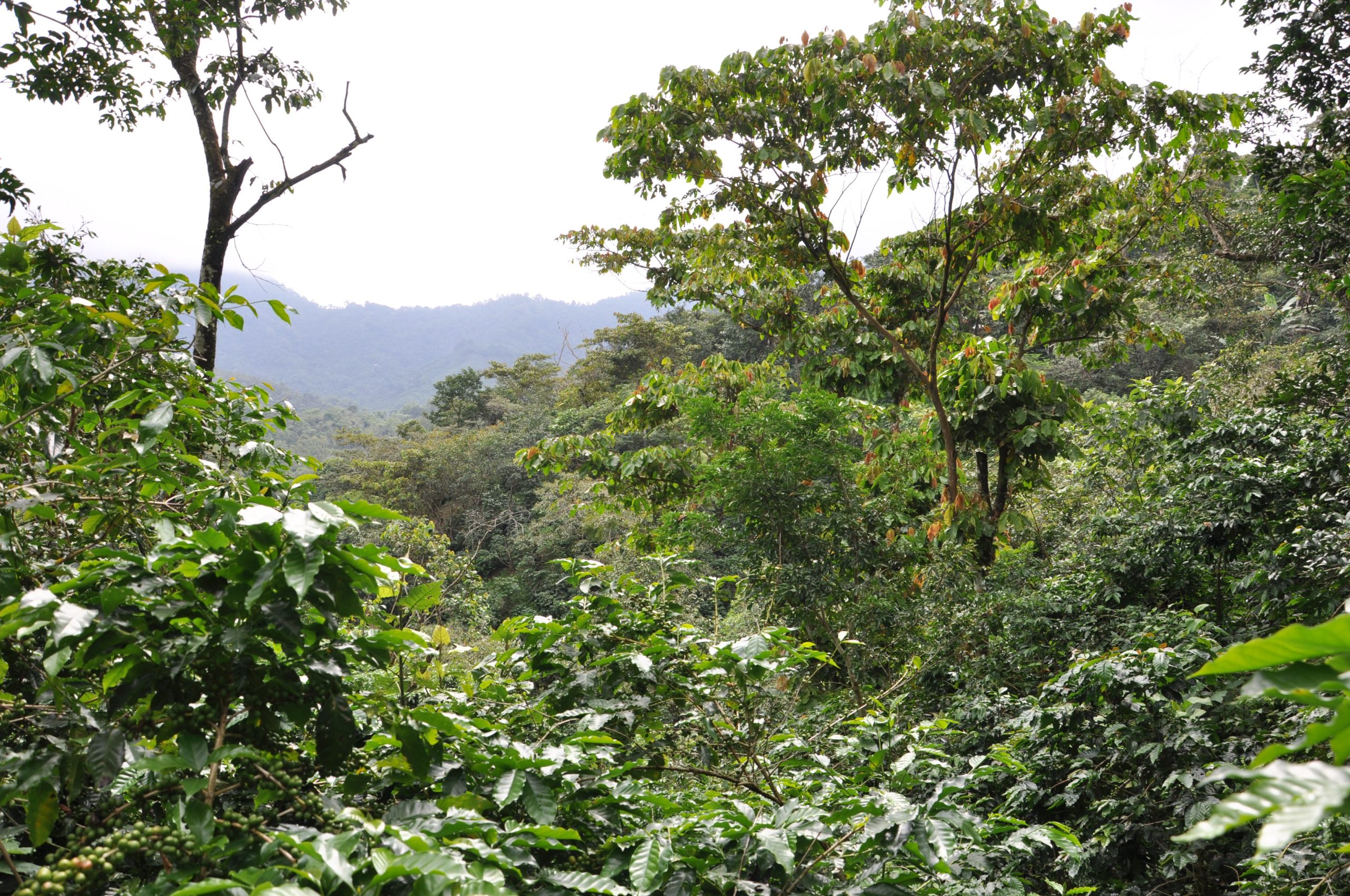If you bought a cup of certified coffee recently, chances are high it might have been brewed using “shade-grown” beans. But what is shade-grown coffee exactly, and why is it important?
What does shade-grown coffee look like?
Coffee can be grown under shaded or full-sun conditions. Globally, about 25 percent of the world’s coffee land is managed under diverse shade, 35 percent under partial shade, and 40 percent under full-sun conditions. The amount of coffee land under full-sun conditions has increased dramatically over the last half-century, as farmers have sought to increase yields by converting shade-grown farms or building new, full-sun plantations.


Coffee grown under full-sun conditions (left), versus coffee grown under partial shade conditions (right)
However, many coffee tree varietals—including Arabica trees, which provide most of the world’s specialty coffee—naturally prefer shaded environments. As a result, many farmers continue to grow their coffee trees within natural or managed forest landscapes, a practice known as “agroforestry.”
Coffee produced on agroforestry farms is broadly referred to as “shade-grown coffee.” However, not all shade-grown coffee is the same. The extent of shade coverage in agroforestry systems varies widely, from densely shaded systems resembling mature forests to more lightly shaded systems with only one or two varieties of shade trees.
Generally, agroforestry farms can be grouped into the following three categories:
- Rustic: Coffee grown within the existing forest, with coffee plants replacing some of the native plants.
- Traditional polyculture: Coffee is grown among native forest trees and intercropped with planted tree and plant species, including fruit and vegetables which farmers often use to supplement their incomes.
- Commercial polyculture: Most native trees are removed to provide more space for coffee plants. Coffee is grown mostly under planted timber and fruit trees.

Adapted from Moguel, P., and Toledo, V.M. (1999).
Why is agroforestry coffee important?
Shade-grown coffee can benefit farmers and the environment:
Potential Livelihood Benefits
• Provide farmers with additional sources of income, in the form of fruit or wood.
• Reduce farmers’ production costs, as shade-grown coffee generally requires fewer chemical inputs, such as pesticides.
• Increase farmers’ productivity over the long-term, as coffee trees grown under shade have a longer lifespan than those grown under very lightly shaded or full-sun conditions.
• Raise coffee quality, which can lead to higher prices for farmers, as shaded coffee trees generally produce slow-maturing, larger beans with a better flavor profile.
• Provide farmers with access to specialty markets that reward shade-grown coffee with premium prices.
Potential Environmental Benefits
• Enrich the soil and strengthen root systems, preventing soil degradation and erosion.
• Capture and retain rainfall, lowering temperatures for the heat-sensitive coffee trees.
• Attract birds, ants, and other organisms that serve as a natural pest control against coffee pests.
• Remove carbon from the atmosphere, helping with climate change mitigation.
• (Assuming a high degree of shade) Serve as important habitat for wildlife, such as migratory birds. This is why shade-grown coffee is often also called “bird-friendly” coffee.
In general, the denser the shade, the greater the environmental benefits. But at high levels of shade, there can be trade-offs between environmental and livelihoods benefits. While shade-grown trees have longer lifespans and are can be more resilient to pests and diseases, they generally produce fewer coffee beans than full-sun trees in any given year. This means that farmers growing shade-grown coffee may have less coffee to sell. However, coffee grown in full-sun conditions can be lower quality than coffee grown in shaded conditions, in which case it would not earn premium prices from buyers. Coffee farmers have to balance these trade-offs when managing their farms.
How does agroforestry relate to Root Capital’s portfolio?
Many of Root Capital’s coffee clients buy from farmers growing shade-grown coffee, generally from traditional or commercial polyculture systems. Root Capital offers these businesses agronomic training, so that their technical staff can help farmers maintain or further diversify their agroforestry farms by teaching them about proper shade management.
Our loan officers conduct due diligence on agroforestry coffee farms from the jungles of Peru to the highlands of Indonesia, and everywhere in between. To get a window into their world—and a better understanding of where your morning cup came from before it made the long journey to your lips—subscribe to our newsletter.
Note: This blog post was updated in March 2019.

